#Germano Celant
Explore tagged Tumblr posts
Text

Germano Celant, Book as Artwork 1960/1972, with a bibliography compiled by Lynda Morris, Nigel Greenwood Gallery, London, 1972 [Saint-Martin Bookshop, Bruxelles-Brussel]







#graphic design#art#catalogue#catalog#cover#germano celant#lynda morris#nigel greenwood gallery#1970s
25 notes
·
View notes
Text
Giuseppe Penone, la natura come materia di scultura

Article
(Image: Giuseppe Penone, Ripetere il bosco [dettaglio], 1969-2022. Installazione Voorlinden Museum, Wassenaar 2022. Foto © Archivio Penone, SIAE 2024)
2 notes
·
View notes
Text














Lichtenstein Sculptor
Germano Celant
Texts Clare Bell & Ian Wallace
Skira, Milano 2013, 294 pagine, 24,5x28,6cm, ISBN 9788857218892
euro 35,00
email if you want to buy [email protected]
Pubblicata in occasione dell'esposizione alla Fondazione Emilio e Annabianca Vedova durante la Biennale di Venezia 2013, la monografia illustra in maniera esaustiva la produzione scultorea di Lichtenstein dal 1968 al 1997, anno della sua morte. Dai primi lavori in ceramica alle opere pubbliche di grandi dimensioni, il volume vuole documentare non solo il processo artistico che parte dagli schizzi e dai disegni per approdare ai collage, alle maquette e alle sculture in metallo fino agli interventi su larga scala in contesti urbani, ma intende anche affrontare il lavoro di Lichtenstein sui metodi di fabbricazione e delle tecniche industriali, con importanti informazioni sui laboratori con cui l'artista collaborò nel corso della sua carriera. Il libro vuole presentare una panoramica esaustiva sulle sperimentazioni dell'artista con i metodi di fabbricazione industriale, inframmezzate da interviste e testi su una scultura bidimensionale.
10/11/24
#Lichtenstein#art exhibition catalogue#Fondazione Vedova Venezia 2013#art books#Germano Celant#fashionbooksmilano
5 notes
·
View notes
Text












Giovanni Gastel Masks and Ghosts
Germano Celant
Skira, Milano 2009, 167 pagine, 30x46,2cm, ISBN 978887203188
euro 30,00
email if you want to buy [email protected]
Milano, Palazzo della Ragione, 23 settembre - 25 ottobre 2009
A splendid, surprising and original work of photography, this book is ideal for lovers of contemporary art and the boldest means of expression.
Beauty, life’s triumph, is fleeting. It heightens the body’s sublime aspect, but beneath its effigy lies the spectre of passing time, and so the figure beauty has within it the spectre of decay. Gastel, the great fashion photographer who has been portraying and exalting beauty for years, challenges himself in this work by confronting one of the deepest philosophical and literary themes. Characterised by a formal exactness, Gastel photography is an interweaving of experimentation and glamour: indeed he was the first to introduce “old mix” techniques, the “criss-cross” technique and pictorial reworking. The images in this catalogue demonstrate the direction of his current work in which the body of models is cut and metamorphose, resulting in a delicate balance between attraction and repulsion. Colour nuances and the manipulation of details through digital technology are extreme, creating fascinating and innovative images. Giovanni Gastel, who is among the best known international photographers, boasts thirty years of experience in the fashion world. He has published his photographs in such influential magazines as Vanity Fair Italia, Vogue Italia and Elle. He has also held a solo show at Triennale, Milan in 1997.
11/07/24
2 notes
·
View notes
Text
Di Ugo Mulas la fotografa Nanda Lanfranco avverte tutta la carica innovativa
Questa ricerca, fin dal suo primo configurarsi, si è delineata come «una proposta di metodo per la ricostruzione storica visuale degli eventi artistici effimeri contemporanei» <1, all’interno della relazione che, attraverso la riproducibilità fotografica, intercorre tra la performance e l’archivio.Due termini – performance e archivio – che sembrano essere concettualmente molto distanti tra loro:…
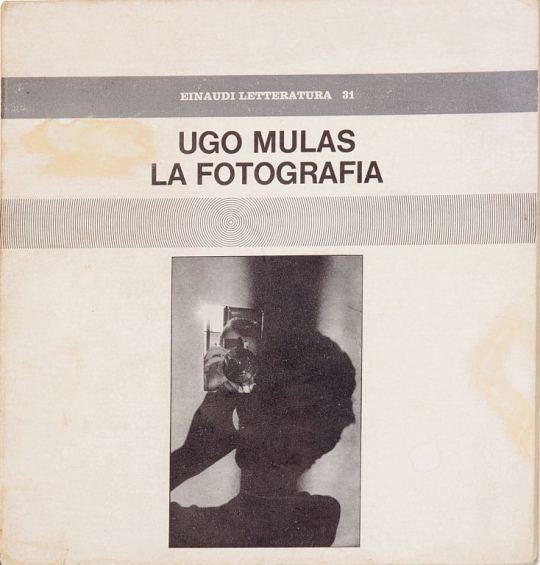
View On WordPress
#1967#1981#Anna Costantini#anni#archivio#arte#Carlo Fedeli#critico#curatore#Eugenio Battisti#Eugenio Carmi#fotografia#galleria#Genova#Germano Celant#Gian Lupo Osti#Gianfranco Bruno#Hasselblad#Ida Gianelli#Italsider#Jack Smith#Land Art#Liguria#Marcatrè#Nanda Lanfranco#Ottanta#povera#rivista#Samangallery#Settanta
2 notes
·
View notes
Text
Books On Books Collection - Guy Bigland
AAA to ZZZ (2018) AAA to ZZZ (2018)Guy BiglandPerfect-bound paperback. H220 x W225 mm. 56 pages. Acquired from the artist, 6 July 2023.Photos: Books In Books Collection. Arranging all possible 3-character combinations of the letters of the alphabet in alphabetical order results in a mesmerizing display. Prolonged staring will lead the eye beyond the vertical and horizontal alphabetic patterns…
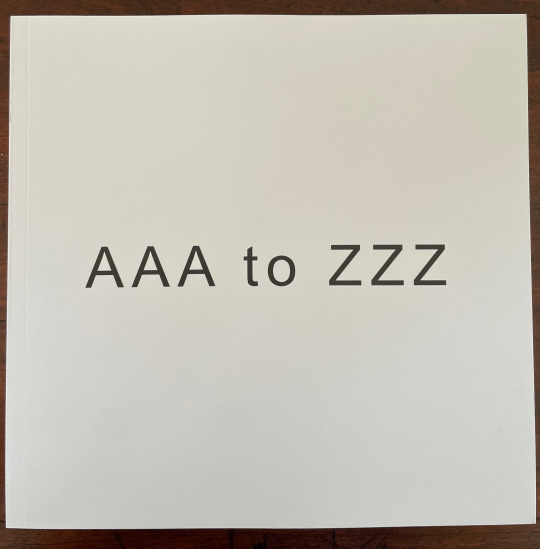
View On WordPress
#Emmett Williams#Francesca Capone#Germano Celant#Guy Bigland#Hanne Darboven#Peter Roehr#Stanley Brouwn
2 notes
·
View notes
Text

the eponymous artwork of my blog in Germano Celant’s prescient Atre Povera, 1969
Mario Merz, Sit in, 1968
Wax, neon, and wirenetting
1 note
·
View note
Text
Di Ugo Mulas la fotografa Nanda Lanfranco avverte tutta la carica innovativa
Questa ricerca, fin dal suo primo configurarsi, si è delineata come «una proposta di metodo per la ricostruzione storica visuale degli eventi artistici effimeri contemporanei» <1, all’interno della relazione che, attraverso la riproducibilità fotografica, intercorre tra la performance e l’archivio.Due termini – performance e archivio – che sembrano essere concettualmente molto distanti tra loro:…
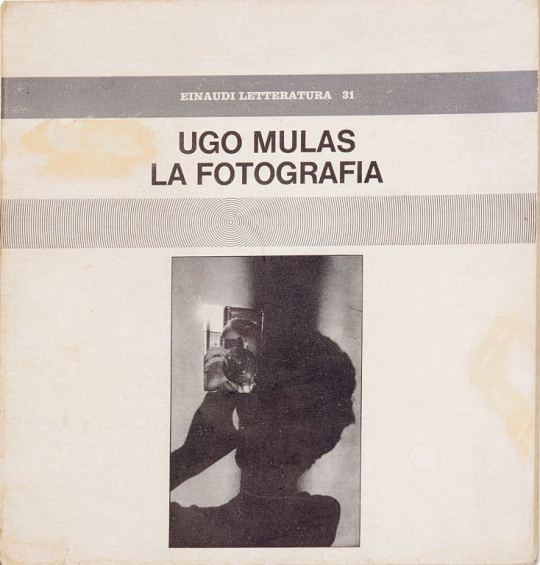
View On WordPress
#1967#1981#Anna Costantini#anni#archivio#arte#Carlo Fedeli#critico#curatore#Eugenio Battisti#Eugenio Carmi#fotografia#galleria#Genova#Germano Celant#Gian Lupo Osti#Gianfranco Bruno#Hasselblad#Ida Gianelli#Italsider#Jack Smith#Land Art#Liguria#Marcatrè#Nanda Lanfranco#Ottanta#povera#rivista#Samangallery#Settanta
1 note
·
View note
Text
Di Ugo Mulas la fotografa Nanda Lanfranco avverte tutta la carica innovativa
Questa ricerca, fin dal suo primo configurarsi, si è delineata come «una proposta di metodo per la ricostruzione storica visuale degli eventi artistici effimeri contemporanei» <1, all’interno della relazione che, attraverso la riproducibilità fotografica, intercorre tra la performance e l’archivio.Due termini – performance e archivio – che sembrano essere concettualmente molto distanti tra loro:…

View On WordPress
#1967#1981#Anna Costantini#anni#archivio#arte#Carlo Fedeli#critico#curatore#Eugenio Battisti#Eugenio Carmi#fotografia#galleria#Genova#Germano Celant#Gian Lupo Osti#Gianfranco Bruno#Hasselblad#Ida Gianelli#Italsider#Jack Smith#Land Art#Liguria#Marcatrè#Nanda Lanfranco#Ottanta#povera#rivista#Samangallery#Settanta
0 notes
Text
Di Ugo Mulas la fotografa Nanda Lanfranco avverte tutta la carica innovativa
Questa ricerca, fin dal suo primo configurarsi, si è delineata come «una proposta di metodo per la ricostruzione storica visuale degli eventi artistici effimeri contemporanei» <1, all’interno della relazione che, attraverso la riproducibilità fotografica, intercorre tra la performance e l’archivio.Due termini – performance e archivio – che sembrano essere concettualmente molto distanti tra loro:…

View On WordPress
#1967#1981#Anna Costantini#anni#archivio#arte#Carlo Fedeli#critico#curatore#Eugenio Battisti#Eugenio Carmi#fotografia#galleria#Genova#Germano Celant#Gian Lupo Osti#Gianfranco Bruno#Hasselblad#Ida Gianelli#Italsider#Jack Smith#Land Art#Liguria#Marcatrè#Nanda Lanfranco#Ottanta#povera#rivista#Samangallery#Settanta
0 notes
Text
Di Ugo Mulas la fotografa Nanda Lanfranco avverte tutta la carica innovativa
Questa ricerca, fin dal suo primo configurarsi, si è delineata come «una proposta di metodo per la ricostruzione storica visuale degli eventi artistici effimeri contemporanei» <1, all’interno della relazione che, attraverso la riproducibilità fotografica, intercorre tra la performance e l’archivio.Due termini – performance e archivio – che sembrano essere concettualmente molto distanti tra loro:…
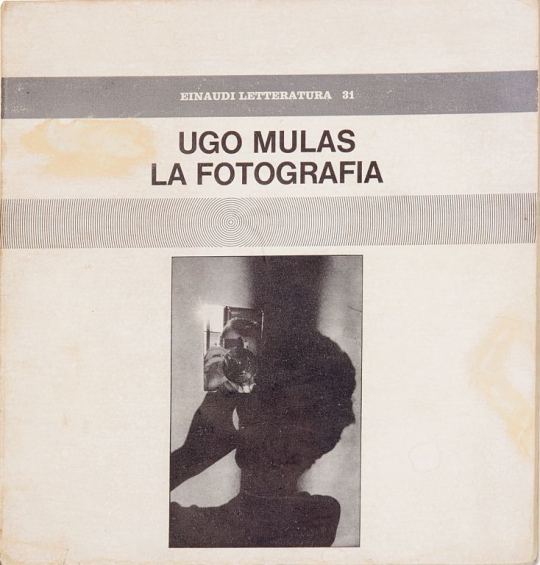
View On WordPress
#1967#1981#Anna Costantini#anni#archivio#arte#Carlo Fedeli#critico#curatore#Eugenio Battisti#Eugenio Carmi#fotografia#galleria#Genova#Germano Celant#Gian Lupo Osti#Gianfranco Bruno#Hasselblad#Ida Gianelli#Italsider#Jack Smith#Land Art#Liguria#Marcatrè#Nanda Lanfranco#Ottanta#povera#rivista#Samangallery#Settanta
0 notes
Video
Leaving intact the value of the existence of things by Russell Moreton Via Flickr: russellmoreton.blogspot.com/ Futuro, Presente, Passato: Remembering Germano Celant (1940–2020) Shumon Basar and Hans Ulrich Obrist www.e-flux.com The art historian, critic, and curator Germano Celant passed away on April 29, 2020, in Milan. Perennially clad in black, his hair a mane of swept-back white, he was as distinctive a physical presence as his presence has been in the art of the twentieth and twenty-first centuries. Described to us once as “a living Vasari”—a reference to the pioneering sixteenth-century author of Lives of the Most Excellent Painters, Sculptors, and Architects—Celant’s sustained output over the last six decades is a map that connects Italian avant-gardes to accelerated internationalism. Celant’s love for history’s radical turns in turn became the very engine through which he managed to shape institutions old and new. Celant produced and reproduced reality, par excellence. Here, we recall how he did this, and why that mattered. Baroque Beginnings Celant studied the Renaissance and the Baroque with the legendary art historian Eugenio Battisti at the University of Genoa in the early 1960s. Battisti’s 1962 book, L’antirinascimento (The Anti-Renaissance), became one of Celant’s formative influences. L’antirinascimento was later described by Christopher S. Wool as covering “a whole range of material and topics that don’t fit—automata, magic and talismanic images, wonders and portents, the Wunderkammer, astrology, alchemy, the topoi of the witch and the old man.” This eclectic synthesis of knowledge fields became a model for what Celant would later pursue. And from Battisti’s understanding of the Baroque, Celant told us he discovered that “there was no distinction between architecture, design, decoration.” What emerges is a total space where disparate categories can meet. The Baroque’s heightened use of sensory effects to stage drama and emotion, the “need to be surrounded by something,” as Celant said, also became the DNA for all that was to follow in his output. Guerrilla Warfare In 1963, Celant started to write for Marcatré, the leading interdisciplinary magazine in Italy, where art sat alongside cinema, design, and theory. Soon he also joined the architectural journal Casabella. In his capacity as art critic for both publications, he began to visit and befriend artists of previous generations, such as Lucio Fontana. But more importantly, he developed relationships with artists of his own generation throughout Italy. This led Celant in 1967, at the young age of twenty-seven, to curate his first seminal show, “Arte Povera – Im Spazio,” in Genoa’s Galleria la Bertesca. It marked the beginning of Arte Povera as an aesthetic, philosophical movement, whose ideas were refined in a manifesto-like text published in Flash Art the same year, entitled “Notes on a Guerrilla War.” Two years later, an eponymous book was released that included the artists Giovanni Anselmo, Alighiero Boetti, Luciano Fabro, Michelangelo Pistoletto, and many others. As Celant put it, “each of these artists chose to live with direct experience, and feel the necessity of leaving intact the value of the existence of things.” (These now feel like premonitory words in relation to the extinction and environmental crisis we face today.) Celant described the need for a “shift that has to be brought about … the return to limited and ancillary projects where the human being is the fulcrum and the fire of research, in replacement of the medium and the instrument.” Arte Povera therefore is “an art that asks only for the essential information, that refuses the dialogue with the social and cultural system and aspires to present itself as something sudden and unforeseen.” It acted as ballast against the loudest art at the time: that of American Pop, which was already perceived as an imperialistic presence in postwar Europe. Indeed, in 1964, Donald Judd had dismissed European art as mere “decoration.” Arte Povera, through Celant’s skills of rhetoric, friendship, and flair, proved there were alternative narratives, and that Italian culture was renewing its critical, countercultural vigor.
0 notes
Text
Pino Pascali, genio eclettico e dirompente
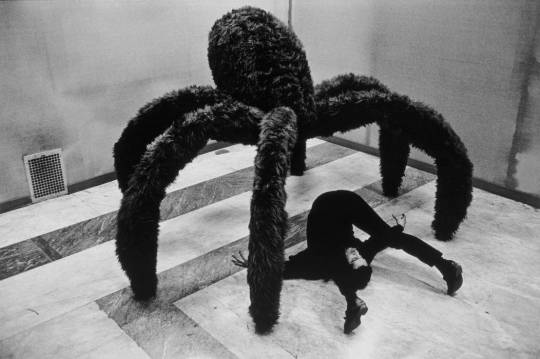
Article
(Image: Pino Pascali, Vedova Blu, 1968. VI Biennale Romana, Palazzo delle Esposizioni, Roma, 1968. Foto di Claudio Abate © Archivio Claudio Abate)
#Pino Pascali#Scultura#Arte Povera#Fondazione Prada#SKMP2#L'Attico#Fabio Sargentini#Bachi da setola#Vedova blu#Carla Lonzi#Germano Celant#Arte italiana
3 notes
·
View notes
Text










Tobias Rehberger On otto
Germano Celant
Fondazione Prada, Milano 2007, 128 pagine, 24x31cm, ISBN 978-88-87029-39-0
euro 50,00
email if you want to buy [email protected]
Mostra Fondazione Prada 20 aprile - 6 giugno 2007
Il libro ideato da Rehberger stesso si riferisce al progetto On Otto progettato appositamente per gli spazi della Fondazione
24/10/24
#Tobias Rehberger#On otto#Germano Celant#art exhibition catalogue#mostra Fondazione Prada 2007#art books#fashionbooksmilano
6 notes
·
View notes
Text



Giovanni Anselmo (1934-2023) Italy
Untitled (Structure that eats) (1968)
One of the key protagonists of the Italian 1960s Arte Povera movement, Giovanni Anselmo has died aged 89. Untitled: Sculpture that Eats (1968) in which a piece of lettuce fills the space between two blocks of granite, threatening the integrity of the structure as it wilts, has become one of the artworks most associated with Arte Povera, the movement theorised by curator Germano Celant as using natural and industrial materials that are ‘poor’ – that is, in opposition to the rich materials associated with art traditionally, from marble to gold leaf. Arte Povera artists like Anselmo, Jannis Kounellis and Marisa Merz have come to define postwar art in Italy.
Born in a small village just outside Turin in 1934, the artist spent the majority of his life and career in the city, where the major museum Castello di Rivoli celebrated his work with a major retrospective in 2016. He participated in the Venice Biennales of 1978, 1980 and 1990 – when he won the Golden Lion Award – as well as Documenta V (1972) and VII (1982). ... artreview.com
exhibited: MAXXI, Rome
9 notes
·
View notes
Text
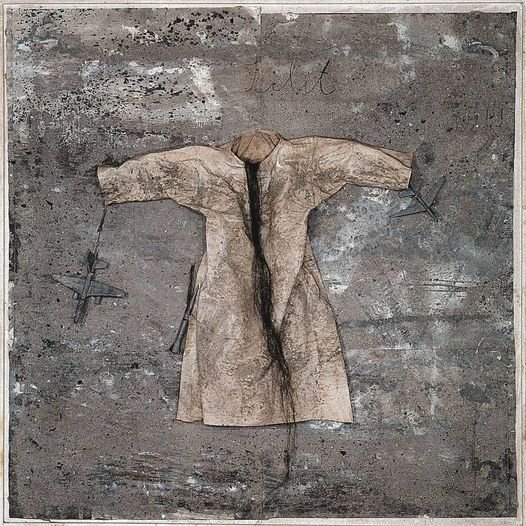
Lilith, 1996 by Anselm Kiefer.
"And I asked myself: what does this city say to me? And I thought of the end of the city, its dispersal into ashes, on the circular movement of all time’ (quoted in Müller 2011, accessed 2 January 2014). This idea of destruction is also evoked by Kiefer’s violent reworking and burning of his canvases.
Kiefer has stated further that Lilith and his other cityscapes involve a reflection on the position of cities ‘between heaven and earth … exposed and fragile’, as well as on the ‘long history of [connections between] towers and vanity’ (quoted in Celant 2007, p.447). Lilith seems to combine both of these ideas by representing very tall skyscrapers, which nonetheless look small and ‘fragile’ due to the work’s extremely high vantage point. Kiefer’s reference to vanity might also suggest another link to the intensely sexual figure of Lilith. In the related painting Barren Landscape Kiefer used human hair to evoke a key feature of Lilith’s purported sensual allure. A similar reference seems to be made in Lilith, although in this work he used coarse, tarnished wire rather than soft hair.
Lilith features several characteristics that are extremely common in Kiefer’s practice, such as the work’s large scale, its very thick application of paint, its combination of mixed media elements with oil paints and its use of muted brown and grey tones, which produce a sombre mood. Kiefer’s works almost always make reference to specific historical and mythological narratives and he has created many other works that relate directly to Jewish mythology."
Further reading
Simon Wilson, Tate Gallery: An Illustrated Companion, London 1991, p.281.
Germano Celant, Anselm Kiefer, exhibition catalogue, Guggenheim Museum Bilbao, Bilbao 2007.
Betram Müller, ‘Menschen noch nicht reif für Atomenergie: Künstler Anselm Kiefer im Interview’, Rheinische Post, 8 October 2011, http://www.rp-online.de/.../menschen-noch-nicht-reif-fuer..., accessed 2 January 2014.
By Lucy Watling
30 notes
·
View notes